Congratulations on landing and entering the U.S.A. successfully. You should now be in your dorm or rental right now but what do you need to do next? The following article will be a general checklist covering what you need to do next before your classes start.
After reading this following article, please then review and follow the instructions of the welcome package that your U.S. university has provided you. The welcome package from your U.S. university will have the necessary information on how to check-in with the school as an international student.

Table of Contents
STEP 1: Buy Necessary Daily Living Essential Items
When you move-into your dorm room or rental, you will be missing some necessary daily living items so you would first need to figure out what you still need and where you will go buy the items. After coming up with a list of the items that you are still missing, you should then search for the nearest store to buy the items that you know you will need to use immediately. For the items that you do not need to use within the first few days, you can buy it online to do price comparison instead.
Buy In-Store or Buy Online
- For the items you need to buy immediately, you can look into stores such as Target, Walmart, Costco, Walgreens, CVS, Rite aid…etc. Big brick and mortar stores such as Target or Walmart should have all the basic items you need in your dorm or rental.
- For the items you want to buy online, you can consider the Amazon student prime membership, because it is free for students in the first 6-month, and then it charges $7.49 USD (which is half off the original price) every month currently. Amazon prime membership offers fast delivery (such as 1-day or same day deliveries) and you can cancel the membership anytime.
Tips: If you are renting an apartment or house from a private third-party, you would also need to take a video/photos to document the condition of the housing at move-in to protect yourself, in case they charge you for any damage when you move-out. Also, have a tape measure ready to measure your living space if you think you would want to buy some extra furniture (such as a small bookshelf).
The following is a checklist for what international students may need to buy to fill up your dorm or rental:
Bedroom
- Bedding, pillow, duvets, comforters, blankets)
- Fans
- Mirror
- Hangers, organizers, storage bins
- Desk lamp, floor lamp, light bulb
Kitchen
- Grocery (oatmeal, snacks, fruit…etc.)
- Pots and pans (nonstick frying pan, sheet pans/baking pans, stock pot, saucepan, baking dish…etc.)
- Utensils/Silverware (knives, chopsticks, forks, spoons, straws)
- Dinnerware (plates, bowls)
- Cooking tools (knives, cutting boards, spatulas, measuring cups and spoons, peeler, tongs, can opener, colander, whish, shears/scissors, grater, oven mitts, ladle, kitchen scale…etc.)
- Food storage containers
- Cups, mugs, water bottle
- Rice cooker, pressure cooker
- Toaster
- Kettle
- Blender
- Aluminum foil, parchment paper/baking sheets
- Kitchen towels
- Sponges, dish wand
- Trash bags
- Trash bin
- Dish washing liquid
- Disinfectant wipes or spray
Bathroom
- Towels
- Shampoo & Conditioners
- Q-tips, basic medical box, cotton pads
- Soap, shower gels
- Toothbrush, toothpaste, mouthwash
- Bathroom tissue rolls
- Shower curtain
- Shower curtain rings or hooks
- Handheld shower heads (very quick to install by youself)
- Body weight scale
Living Room & Other
- Power strip & Extension cord
- Vacuum
- Tissues
- Laundry basket
- Laundry detergent
- Bookshelf
- Wifi modem & Wifi router (most on-campus housing should not require this)
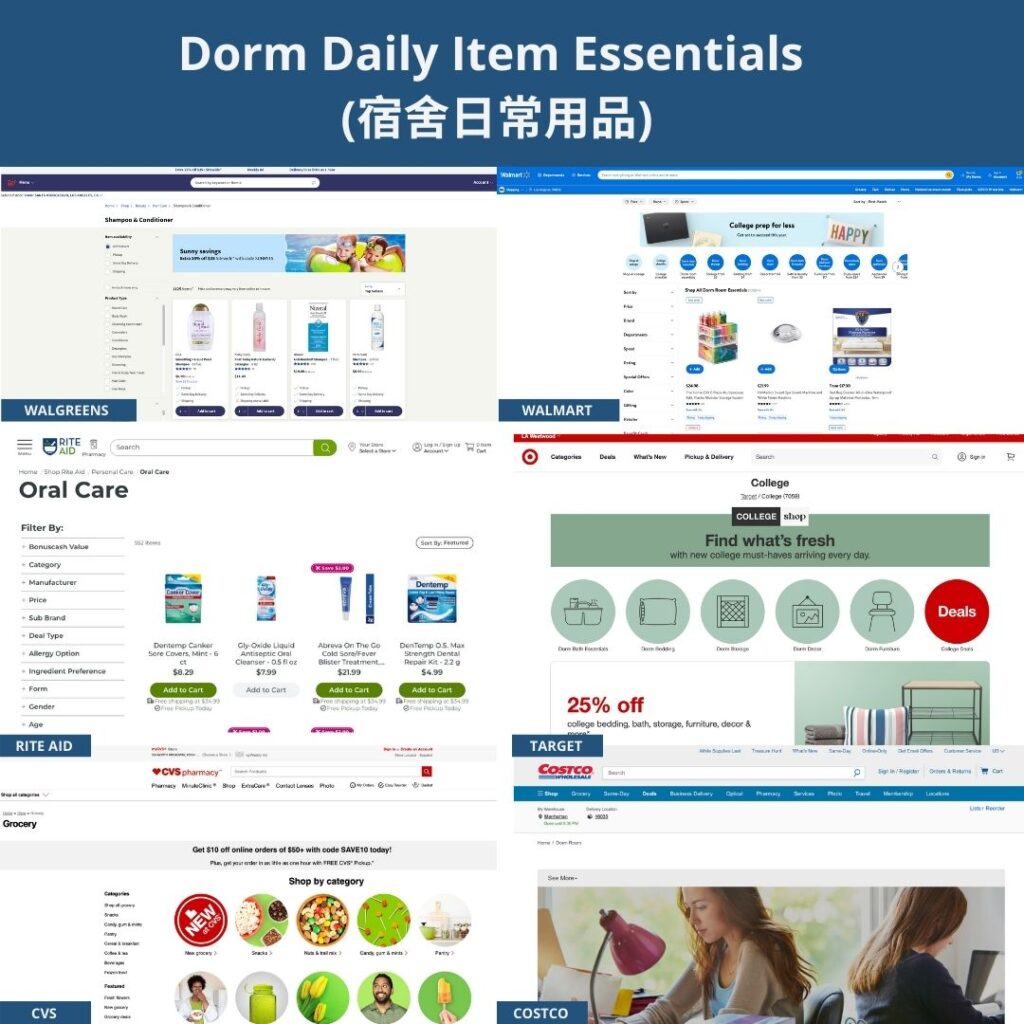
STEP 2: Check-In With U.S. School & Attend International Student Orientation
After you arrive in the U.S.A. as an international student, you will have to follow the instructions on how to check-in with your U.S. university. This should be in the welcome package from your U.S. school. Every U.S. school has their own process and timelines to check-in international students, however, most U.S. schools will require international students to provide a copy of their passport, student visa (F1 visa, M1 visa, J1 visa), I-94 record, I-20/DS-2019, the U.S. address the international student will be living at, and the international student’s U.S. phone number. Usually there will be an in-person orientation that you as an international student will be required to attend as a part of your check-in process with your U.S. school.
STEP 3: Pay International Student Tuition & Enroll In Class (Buy or Rent Required Textbooks)
As an international student, you will be required to pay the tuition for your U.S. school and enroll in enough classes that satisfy the minimum credit requirement for the semester. In general, International students (F1 visa students, J1 visa students, M1 visa students) are required to have a minimum of 12 credit hours for each semester.
Where To Buy Or Rent Textbooks
The required textbooks in your class syllabus can be bought from multiple places, however, college-level textbooks in the U.S.A. are usually very expensive especially if you buy it through the U.S. school’s campus bookstore. Brand new textbooks sold through university campus bookstores are usually sticker price which means full-price and expensive, so most people choose to rent textbooks or buy used textbooks online.
- Amazon
- BookFinder
- Chegg
- U.S. university campus bookstore
Tip: Use the textbook’s ISBN number to search.

STEP 4: Get Student ID Card As An International Student
After arriving to the U.S.A. as an international student, please follow the welcome package or email from your U.S. school to get your student ID card. In most cases, you will need a document to prove your identity (such as your passport) and a photo of yourself. Student ID cards can be used as a keycard to access school buildings, to pay for your meal plans, used for on-campus bus rides…etc.
STEP 5: Mandatory Health and Immunization Requirements For International Students
Generally, international students will be required to comply with the mandatory health and immunization requirements of the U.S. school. For example, you may be required to head to the U.S. school’s health department to get a tuberculosis (TB) screening. Please have your health and immunization records in a safe place because you may need to provide the documents to the health department of your U.S. university.
In most cases, international students will automatically be enrolled in the student health insurance plan with the U.S. school. Usually, student health insurance plans with the U.S. school will be better in price and plan coverage than buying health insurance outside as an individual.
STEP 6: Open Bank Account & Debit Card/ Credit Card As An International Student
As an international student you will be able to open up U.S. bank accounts (checking accounts and saving accounts), debit cards, and credit cards. It is important for international students to at least have a bank account and a debit card while living in the U.S.A. because most people in the U.S.A. do not carry cash and it is not considered safe to carry too much cash while outside.
Also, for international students who have just arrived to the U.S.A., it may not be possible to get a credit card in the beginning without an SSN (which usually requires a job such as an internship) or any credit history in the U.S. but a debit card should be fairly easy to obtain.
Well-Known U.S.A. Banks
Each U.S.A. bank differs in requirements for international students to apply for bank accounts, credit cards, and debit cards, but in most cases you would be required to provide the documents listed below:
- Passport and student visa
- I-20/DS-2019 document
- I-94 arrival and departure form
- Proof of residency (such as utility bills sent to your U.S. address)
- Secondary Identification (such as a driver’s license, student identification, birth certificate)
- Letter of enrollment verification from your U.S. school
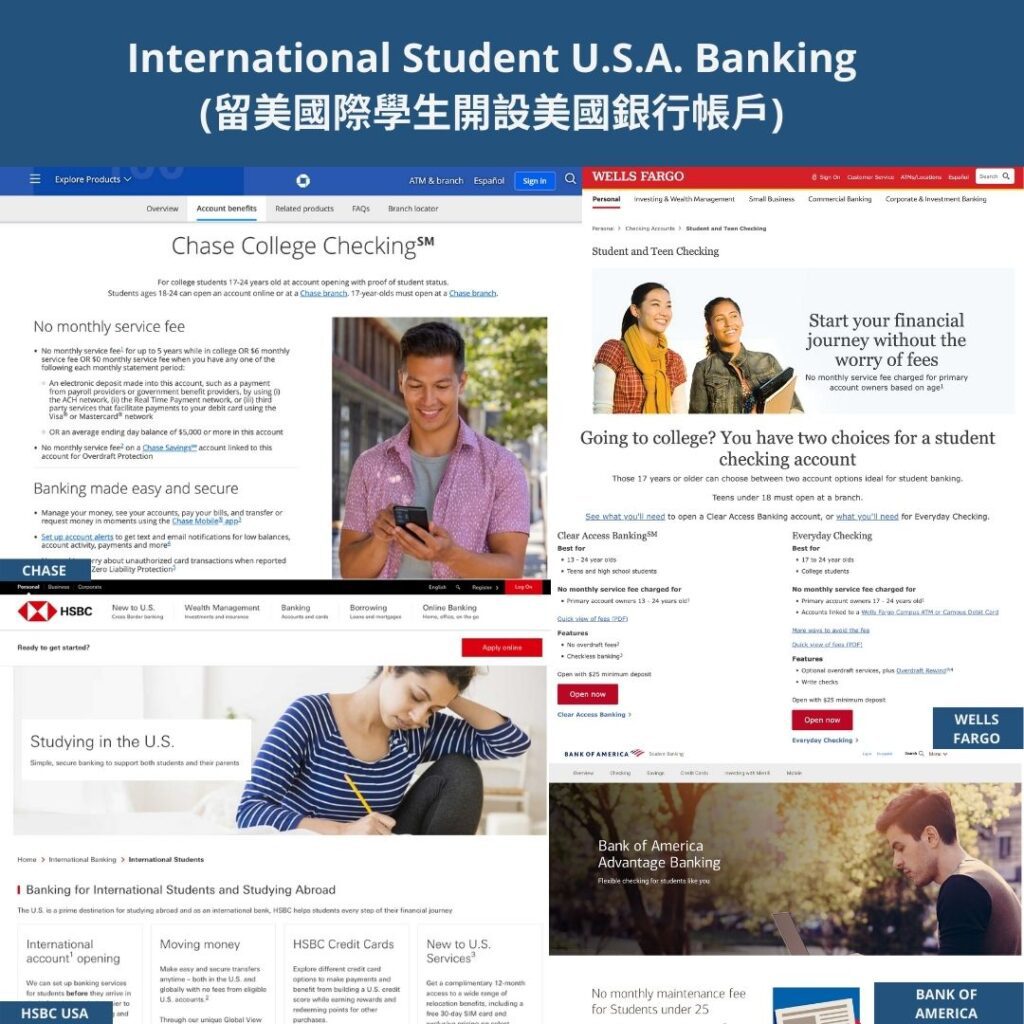
STEP 7: Get a U.S. Driver License As An International Student
When you have settled down in the U.S.A. as an international student, you may want to get a U.S. driver’s license especially if you decide to buy a car to use because in most situations a U.S. driver’s license will be asked for when you buy a car and get car insurance. In other words, if you want to buy a car to use in the U.S.A., you should get a U.S. driver’s license even if you have an international driver’s license or driver’s license from your home country.
You should first check the DMV (Department of Motor Vehicles) website of your State because requirements can vary among states, and you will need to find a local DMV office to take your driving license exams.
In most cases, you will need to provide the documents below as an international student applying for a U.S. driver’s license:
- Passport and student visa
- I-20/DS-2019 document
- I-94 arrival and departure form
- Two proof of residency documents (such as utility bills sent to your U.S. address, lease…etc.)
After scheduling your DMV appointment online and attending the appointment, the major steps that you would need to complete for your U.S. driver’s license are:
(1) Pass vision exam
(2) Get photo taken
(3) Pass the knowledge test
(4) Driving test
If you encounter issues with applying for a U.S. driver’s license, make sure to contact your U.S. school’s international student department for assistance. If you have problems with your visa as an international student (F1 visa students, J1 visa students, M1 visa students) that your U.S. school cannot solve, please contact us to schedule a consultation.
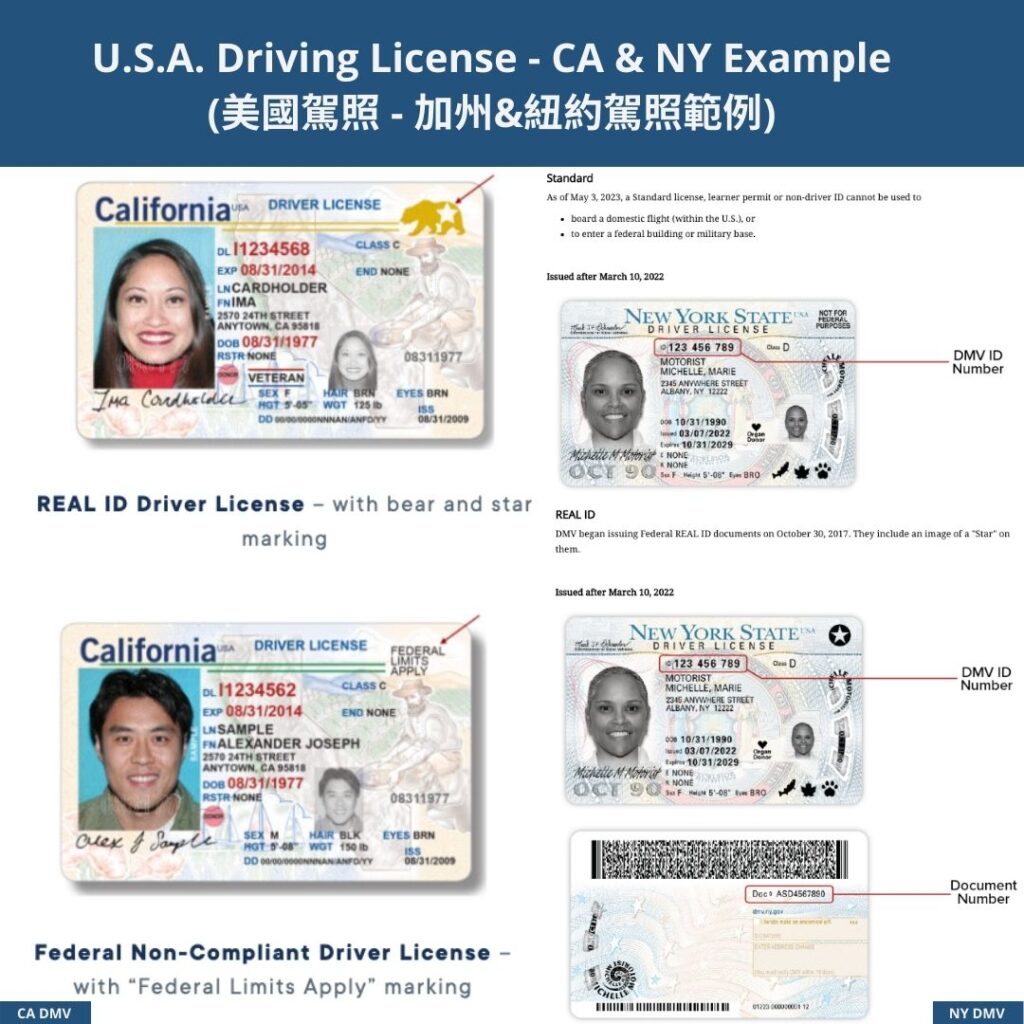
STEP 8: Always Remember To Carry Your I-20/DS-2019 When Traveling
As an international student (F1 visa students, J1 visa students, M1 visa students), you must always remember to carry the I-20/DS-2019 document with you whenever you are traveling, especially when you are traveling internationally (flying in and out of the U.S. or crossing country borders such as driving to and from Canada or Mexico).
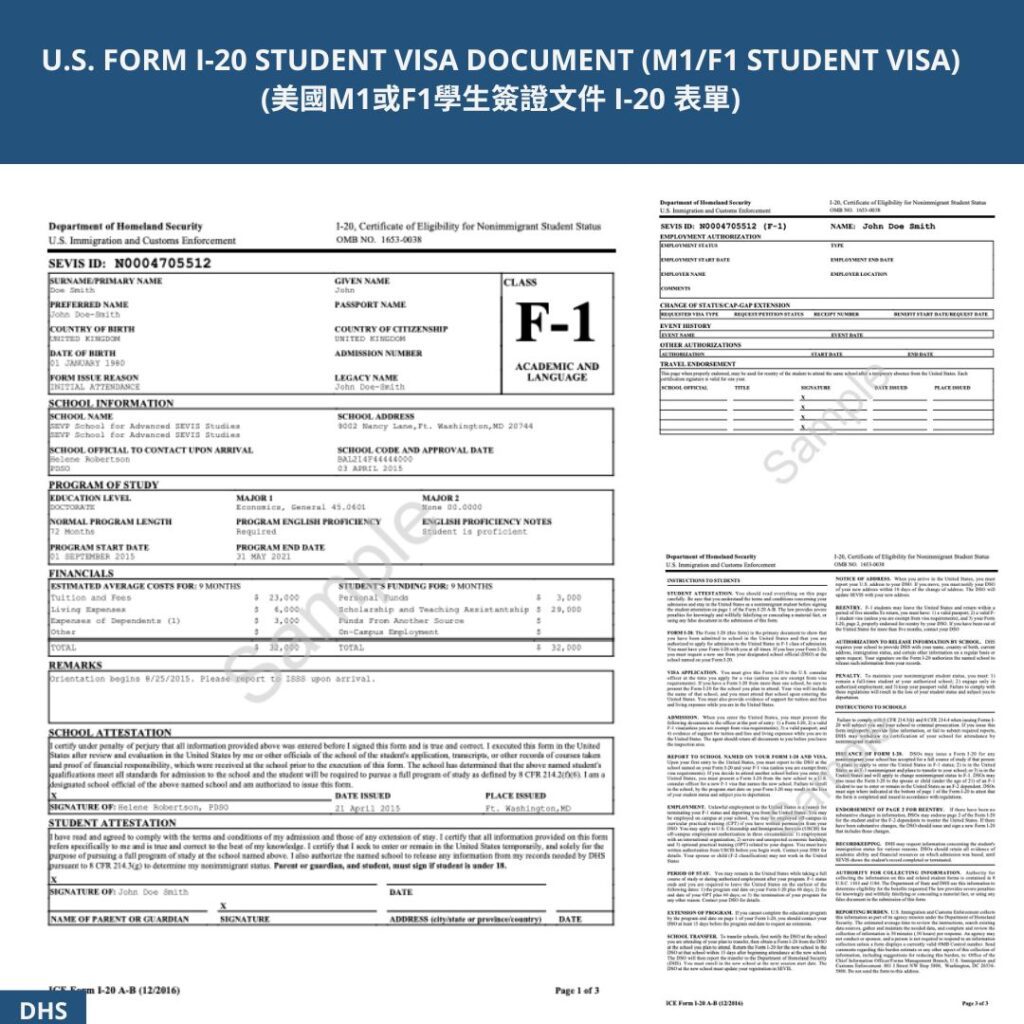
Click to download a Form I-20 sample.
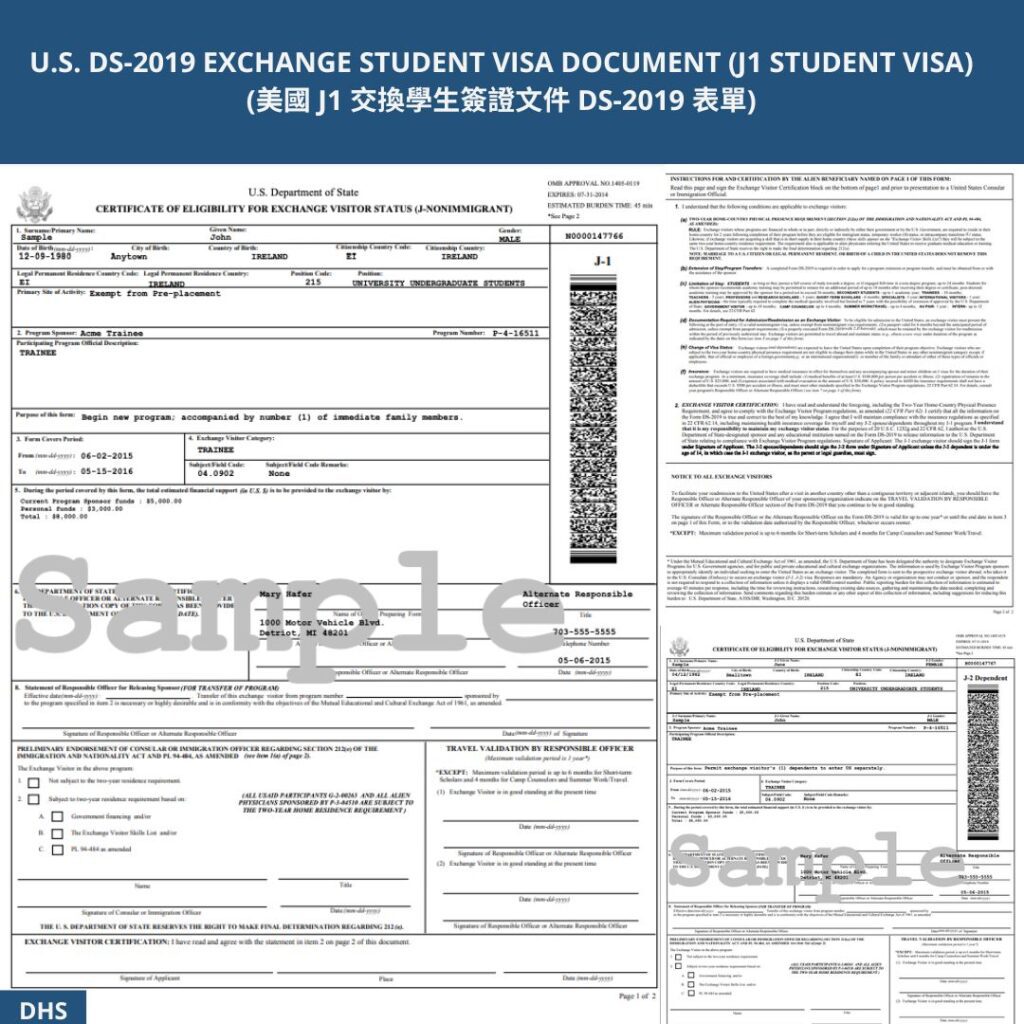
Click to download a DS-2019 sample.
When You Don’t Have Your I-20/DS-2019 or An Approved Signature On Your I-20/DS-2019 After Coming Back From An International Trip As An International Student
As an international student (F1 visa students, J1 visa students, M1 visa students), you must always remember to obtain a travel endorsement signature on your I-20/DS-2019 document from the International Students Department of your U.S. school BEFORE traveling internationally. The signature from the International Students Department of your U.S. school is proof that you are approved for international travel. The names for the international student’s department can vary for different schools, for example the international students department for University of Illinois Urbana-Champaign is called “International Student and Scholar Services” and for University of Southern California it is called “Office of International Services.”
Each U.S. school has their own processing time and procedures for international students (F1 visa students, J1 visa students, M1 visa students) to apply for a travel endorsement signature so please always plan ahead when traveling internationally. If you forgot to obtain the travel endorsement or left your I-20/DS-2019 student visa document in the U.S. before you left the U.S. to travel internationally as an international student, you may still be able to obtain a newly signed I-20/DS-2019 document from your school’s international students department. If you encounter these types of issues, please contact your school’s international students department immediately. This should be done before checking in or boarding on your flight back to the U.S.A.
What Happens When You Don’t Have Your I-20/DS-2019 or An Approved Signature On Your I-20/DS-2019 When Returning To The U.S.A. As An International Student
If you do not carry your I-20/DS-2019 document or do not obtain an approved signature from the International Students Department as an international student (F1 visa students, J1 visa students, M1 visa students), you most likely will be taken to the secondary inspection room when you are re-entering the U.S.A. The CBP officer usually will contact the U.S. school (usually there will be an emergency line/contact person for these type of situations at your school) and then allow you in with a Form I-515A. However, in rare circumstances you can be sent back on a flight to the country you flew from. So, to avoid unnecessary trouble, please remember to have your signed I-20/DS-2019 ready before you leave the U.S.A. for all international trips.
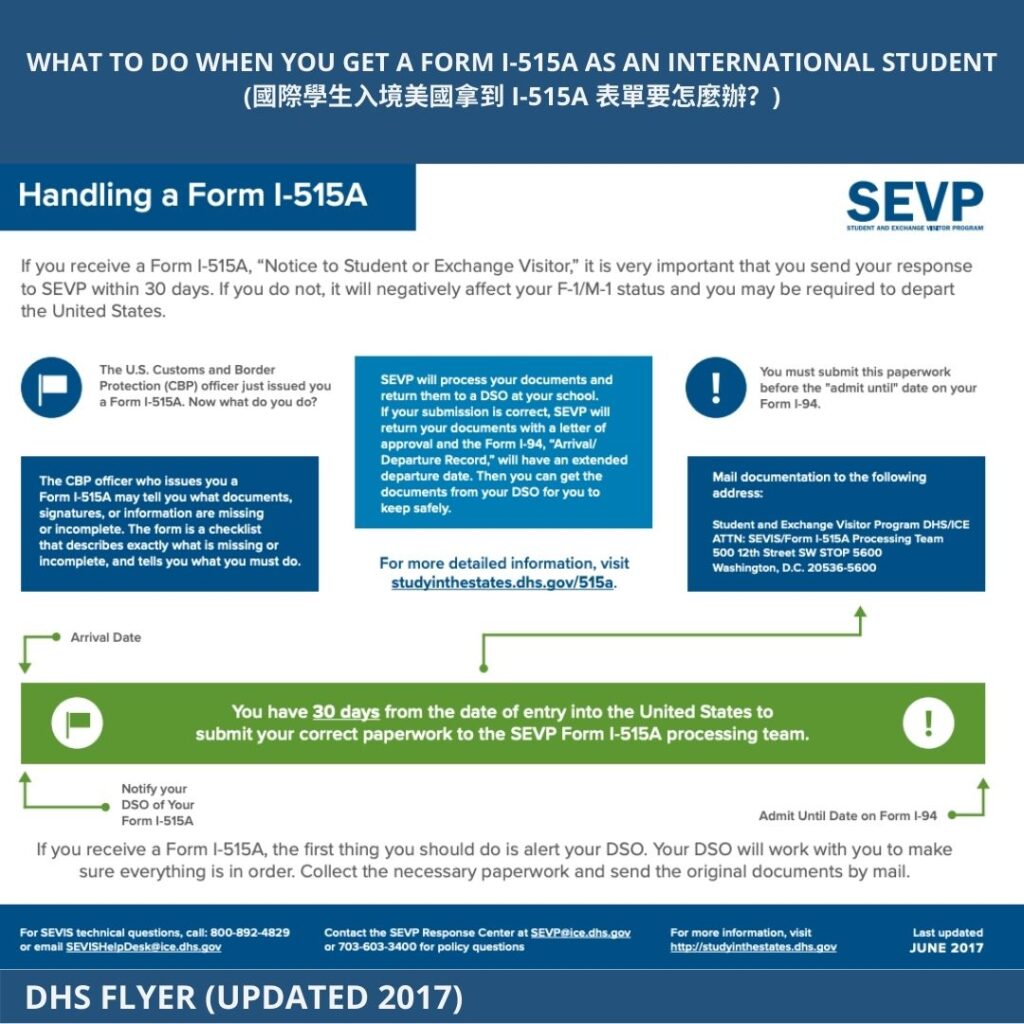
Form I-515A Temporary Entry To The U.S.A. For International Students
International students who receive Form I-515A (Notice to Student or Exchange Visitor) are allowed to temporarily enter the U.S.A. for 30 days, however, you must correct this temporary expiration date back to your original student visa validity time period. After receiving the Form I-515A and entering the U.S.A. as an international student, you must contact the international student and scholar services of your school and submit a new Form I-20/DS-2019, Form I-94, Form I-515A, copy of the admission stamp in your passport, and I-901 SEVIS Fee receipt to the SEVP government agency address listed on the Form I-515.
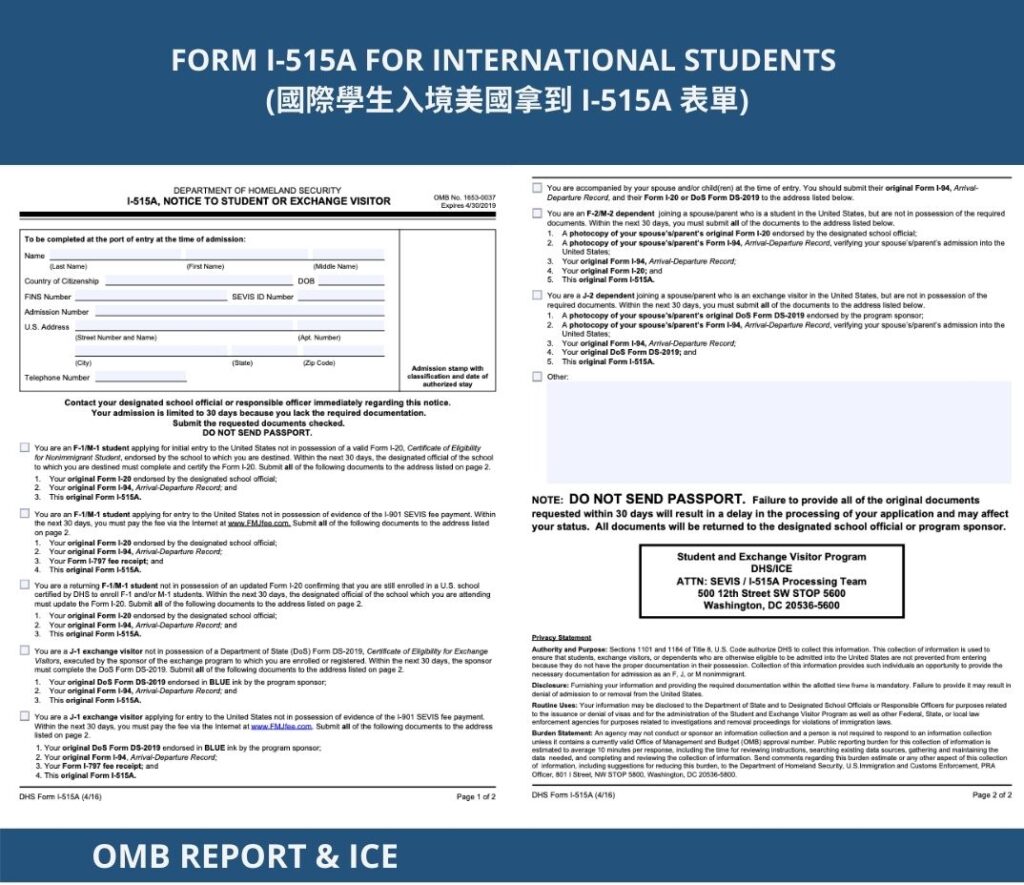
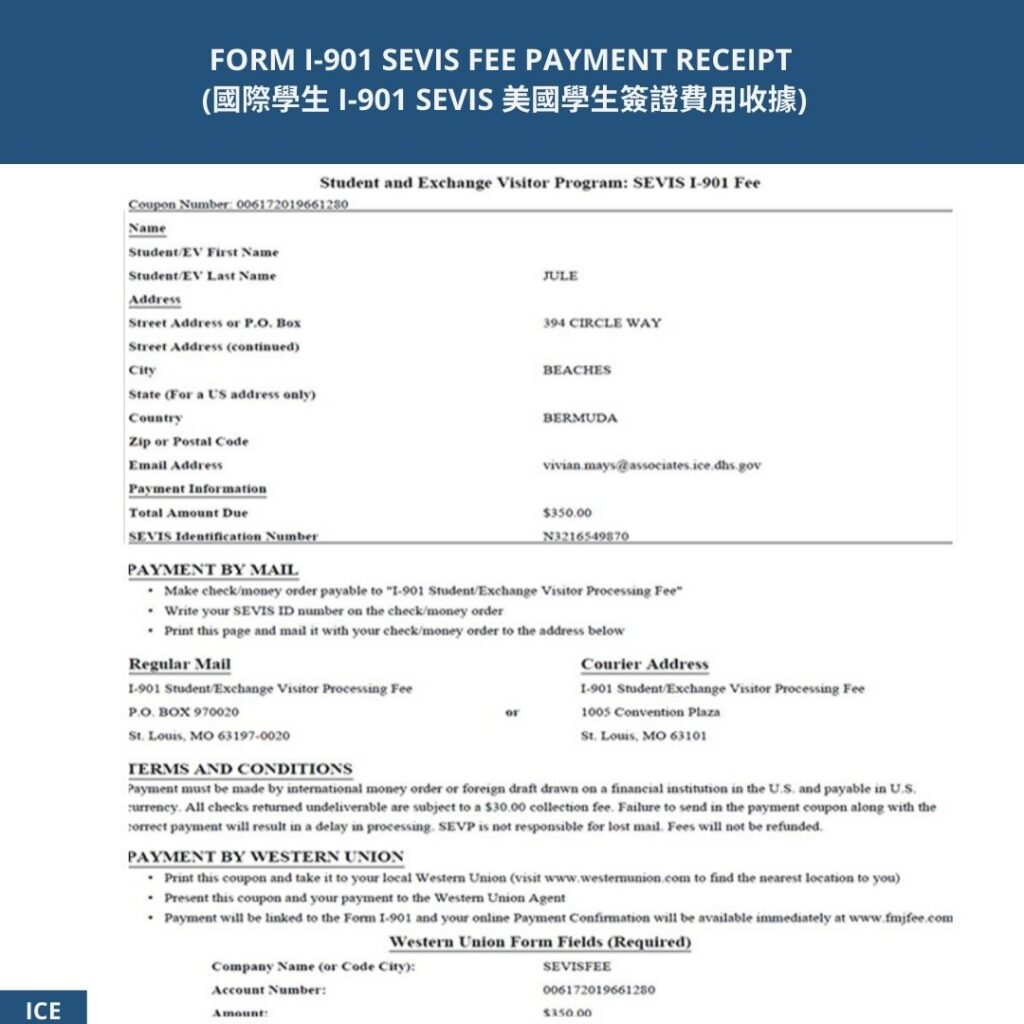
RELATED ARTICLES
- H1B Work Visa (Specialty Occupations)
- Employment-Based Green Card Overview (Lawful Permanent Resident)
- Family Based Green Card Overview
- Marriage Based Green Card (IR1 / CR1 / F2A)
- Useful Apps to Download While Living in the U.S.
- A Guide to Moving in the United States of America (USA)
- A Guide to Searching and Renting Apartment or Houses in the U.S.
- A Guide for International Students Studying in the U.S.
- A Checklist of Things that an International Student Should Prepare Before Coming to the U.S.
- A Checklist of Things that an International Student Would Need After Arriving to the U.S.
- A Guide to Grocery Shopping in the United States of America (USA)
- Shopping Luxury or Designer Goods While in the Living in the U.S.

